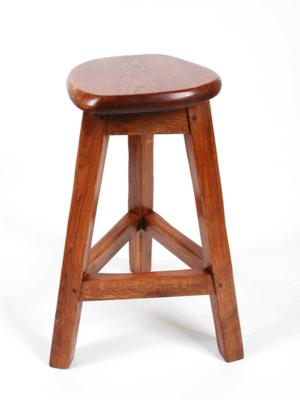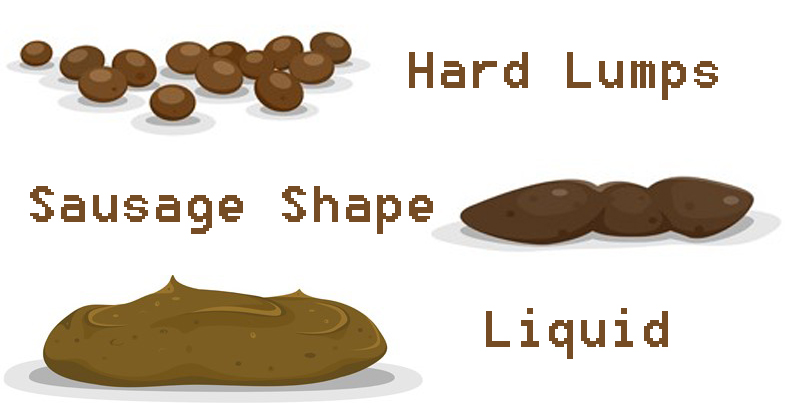Poop. We all do it, ideally on a daily basis, but we don’t usually like to talk about it. It isn’t exactly polite dinner conversation, after all. However, if you have a baby or toddler, chances are, poop comes up in your conversation at least once a day. Or maybe, when it comes to talking about fecal matter, you aren’t shy at all. You might even giggle when the topic comes up (it’s okay, you’re not alone!). Or, perhaps you don’t care to talk, read, or think about it at all.
But today we’re getting down and dirty and talking all about good ol’ number two. If you care about your health, it’s crucial you face this subject, so to speak, head-on. So get ready to bite the bullet and learn all about what a health poop looks like. First, here’s a bit of a strange request.
I want you to get into the habit of observing your dump.
Yup, that’s right! In order to know what a health poop should look like, you need to start looking at your own poop. I know, a lot of us like to flush as soon as possible to spare ourselves the supposed horror we’ve just left behind. However, when you do that, you’re literally flushing valuable information down the drain.
How, you ask? Well, your poop tells all. It can provide a tremendous amount of insight into the function of your digestive system and the health of your body overall.
The practice of inspecting your poop is a great awareness tool that can allow you to reflect on your health and eating practices daily. Maybe, however, you’re already looking at your poop, out of curiosity if nothing else. Good for you! Now you can start looking for what health–or not-so-healthy poop–should look like. But when it comes to healthy poop, what should you be looking for? Here’s a handy dandy list.
The Perfect Stool

No, not that stool, although it is nice.
- One complete elimination in the morning
- A brown color
- A banana shape
- Does not stick to the toilet
- Easy to wipe – no mess (your wipe should be fairly clean)
- Minimal odor (that’s right, your poop shouldn’t stink, at least not too badly!)
- Almost always the same regardless of foods eaten
Imbalanced Stool
- Mucus in the stool (looks like cobwebs wrapping around poop)
- Green or yellow stool (not from eating excess green veggies)
- Black stool
- Greasy or shiny stool
- Clay-colored stool
- Blood in the stool
- Undigested food in the stool
What does the color of your poop mean?

Spoiler: Neon is bad.
As mentioned before, brown is what your stool should be. Some other colors you may see include red, green, yellow, white, and black. Now, keep in mind, if you’ve recently consumed a decent amount of beets, your poop will likely come out tinged with red. This, of course, is normal and to be expected. Additionally, certain medications may affect the color of your stool. But anything that isn’t the standard brown can be cause for alarm.
All of these other colors (barring the consumption of foods or medications that would cause a temporary shift, such as beets) could be indicative of something going on in the body that needs to be addressed. Here are some possibilities:
- Red could mean lower GI bleeding.
- Green could mean Crohn’s Disease.
- Yellow could mean gallbladder trouble or parasites.
- White could indicate liver disease or pancreatic problem.
- Black could mean upper GI bleeding.
The occasional off-color poop probably isn’t anything to worry about. At the most, you may need to adjust your diet. However, if your poop is consistently a non-brown color, there could be a more serious underlying cause. You should consult with your doctor if your stool is an unusual color for an extended time.
How often should you poop, anyway?

WebMD says: “Depending on your diet, age, and daily activity, regularity can mean anything from three bowel movements a day to three each week.”
However, there’s more to proper bowel function than just being regular. For example, you should be able to:
- Pass a bowel motion within about a minute of sitting down on the toilet.
- Pass a bowel motion without pain – ideally, you should not be straining on the toilet or struggling to pass a hard or dry stool.
- Complete evacuation of your bowel; you should not have to go back to the bathroom soon after to pass more.
So how do you achieve the perfect poop?
- Chew your food! Shoot for 27 chews per bite. It should be a paste before you swallow.
- Eat until you are 80% full. Overeating is a massive burden on the digestive system. When you’re finished eating, wait a while. Give your body a chance to finish digesting, and you will likely feel fuller when that occurs then when you first finished eating.
- Remove all sources of gluten from your diet (the most common sources are wheat, barley, rye, spelt and other grains)
- Eat a diet that includes whole foods, rich in fresh, organic vegetables and fruits that provide healthy nutrients and fiber. Bear in mind that most of your fiber should come from vegetables, not from grains.
- Avoid artificial sweeteners, excess sugar (especially fructose), chemical additives, MSG, excessive amounts of caffeine, and processed foods, as they are all detrimental to your gastrointestinal (and immune) function
- Boost your intestinal flora by adding naturally fermented foods into your diet, such as sauerkraut, pickles, and kefir (if you tolerate dairy); add a probiotic supplement if you suspect you are not getting enough beneficial bacteria from your diet alone.
There is also one major thing a lot of us in North America get wrong about pooping. Catch the details here.
You might be surprised to learn how pooping in other regions of the world differs from pooping in North America. It’s a pretty major difference that leads to many of the problems we face when it comes to pooping.
Resources:


